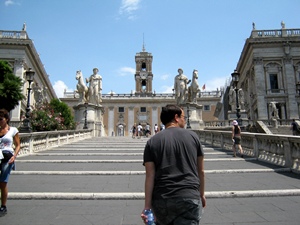
Philip Climbs the Cordonata
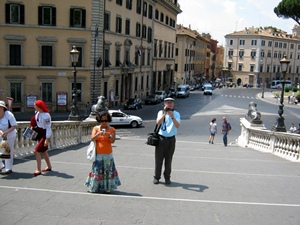
Nella and Bob on the Cordonata
Back to Ges¨ Church Continue to St. Ignatius Church
The
Capitoline Hill overlooking the Forum was the site of the most important temple
in ancient
 Philip Climbs the Cordonata |  Nella and Bob on the Cordonata |
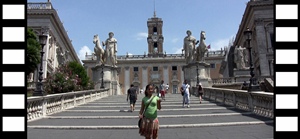
Ascending the Cordonata
HD Video (20.0 MB) SD Video (8.5 MB)
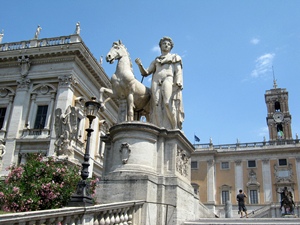 Statue of Castor | 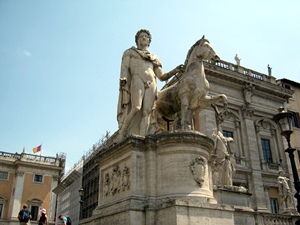 Statue of Pollux |
The Piazza itself is laid out trapezoidally, with an open space
surrounded by Palazzi with Michelangelo-designed elements in their fašades. The Piazza was deliberately laid out to face
away from the Forum (which is to the east) and toward the
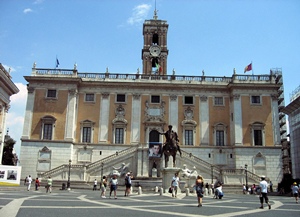 Palazzo Senatorio | 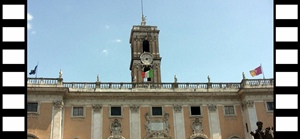 Piazza del Campidoglio and Palazzo Senatorio HD Video (17.0 MB) SD Video (7.4 MB) |
The floor of the Piazza itself has an interesting pattern of tiles which
was designed by Michelangelo but was not implemented until 1940, under
Mussolini. The center of the Piazza
holds an equestrian statue of Marcus Aurelius which Michelangelo didn’t like
very much (he supplied a less-than-grandiose pedestal for it). The present statue is a copy, with the
original in the
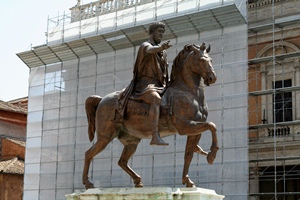
Statue of Marcus Aurelius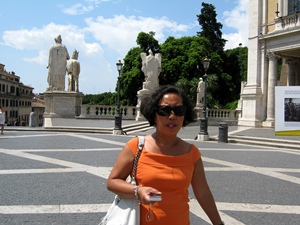
Nella in Piazza
To
the left of the Palazzo Senatorio is a road leading to a nice (and free)
overlook of the Forum. We took advantage
of this and took a few photographs.
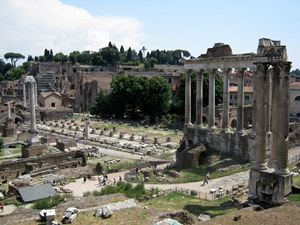 Forum from Capitoline Hill | 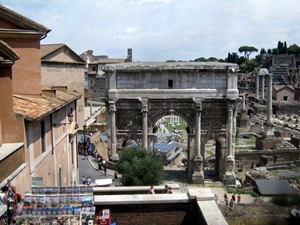 Arch of Septimius Severus |
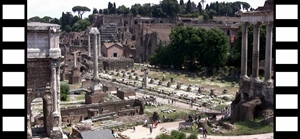 Forum and Pigeon HD Video (16.5 MB) SD Video (9.5 MB) | 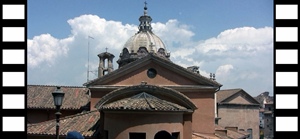 Skyline and Family Discussion HD Video (16.8 MB) SD Video (8.0 MB) |
Then we looked at our watches (those of us that had watches, anyway) and observed that the St. Ignatius Church would be open, according to its posted hours. So we descended the cordonata and backtracked mostly to the north to find the church.